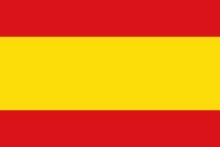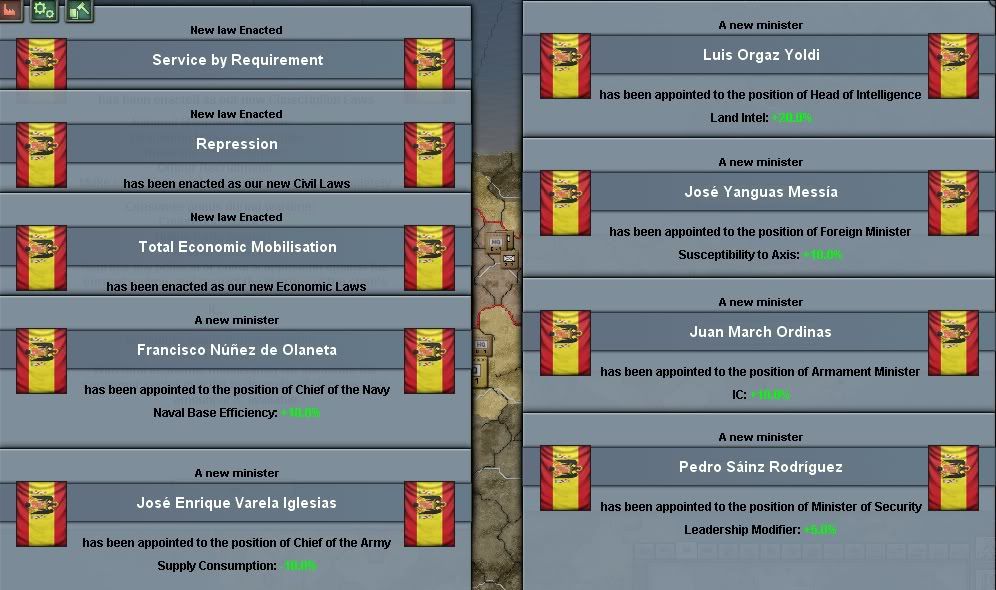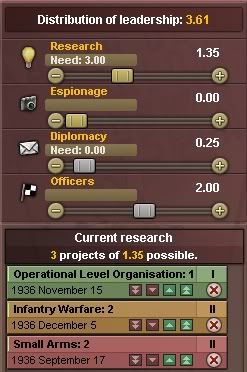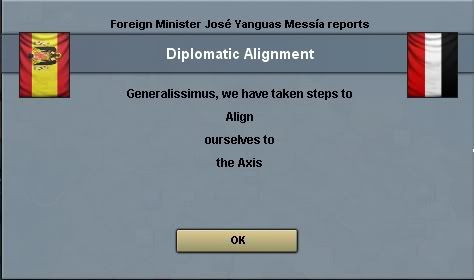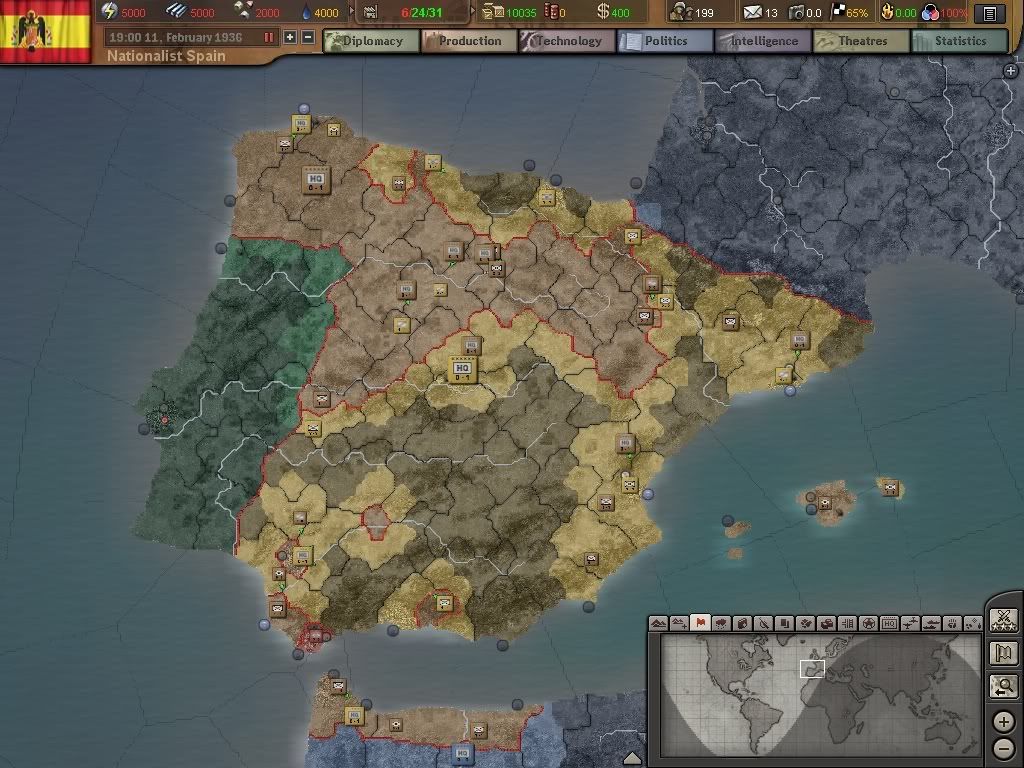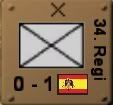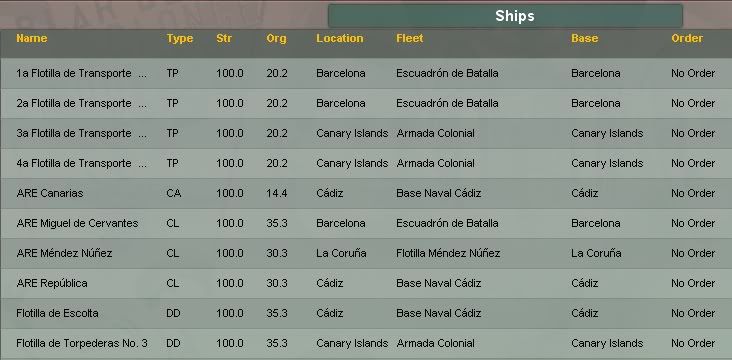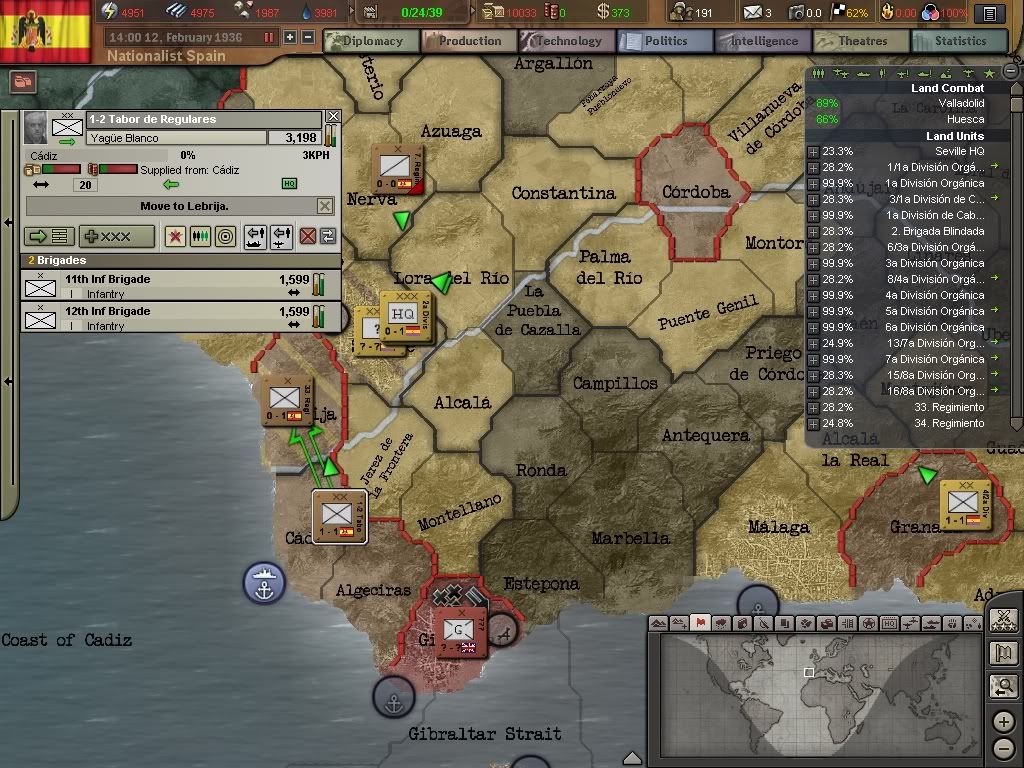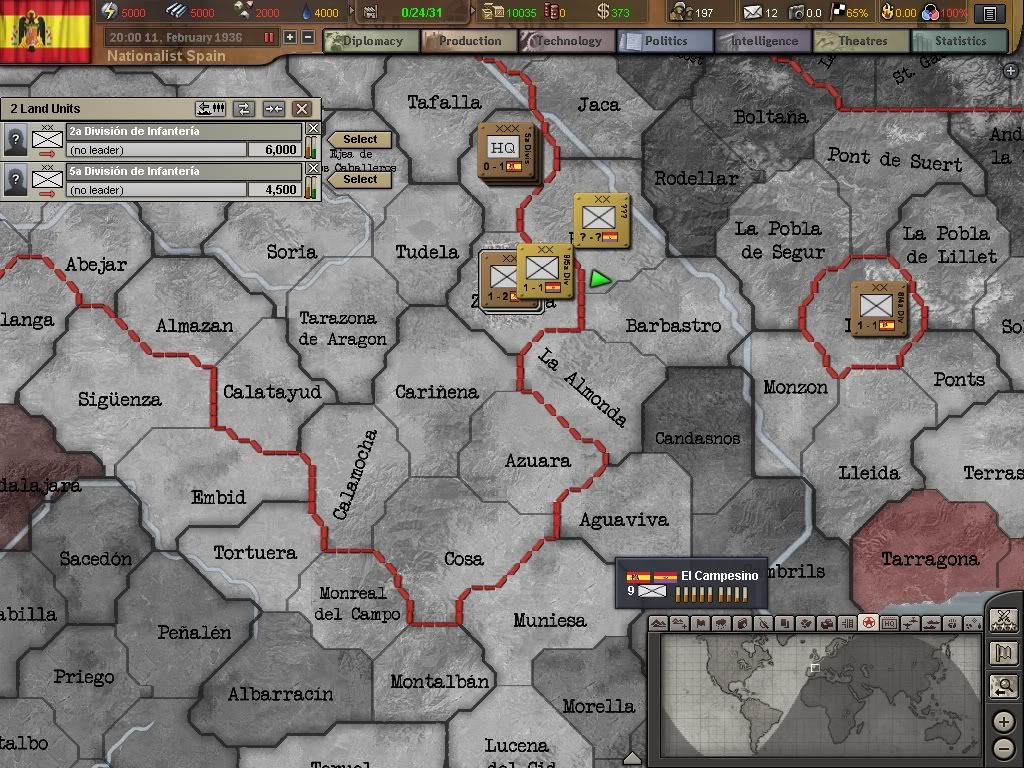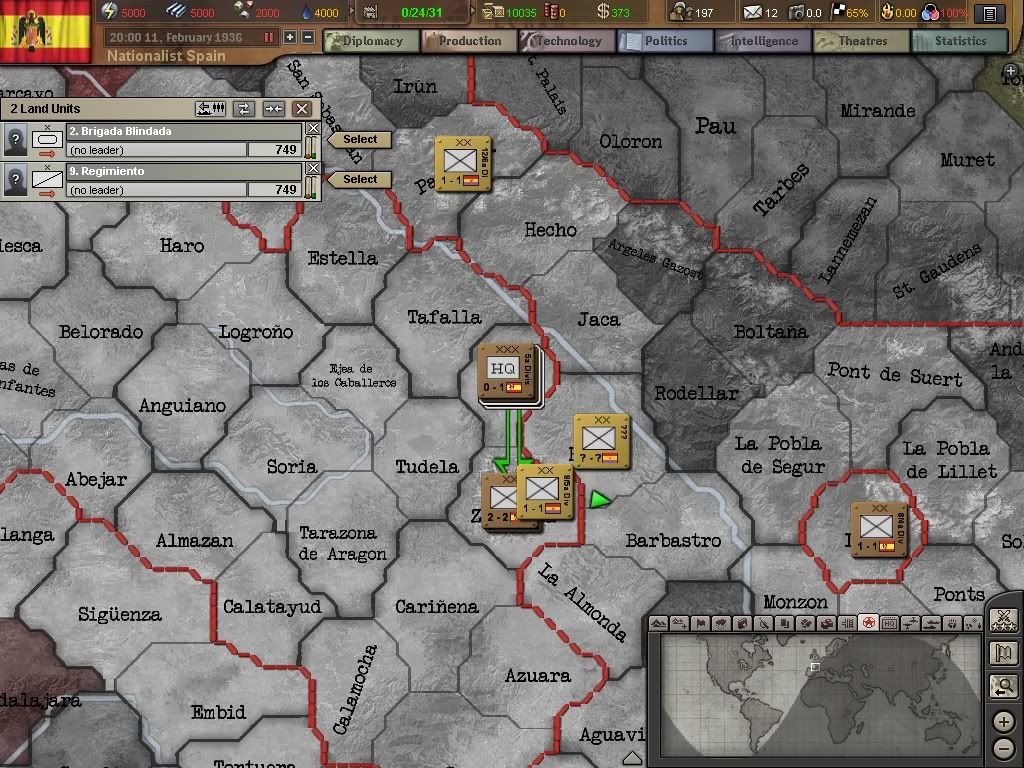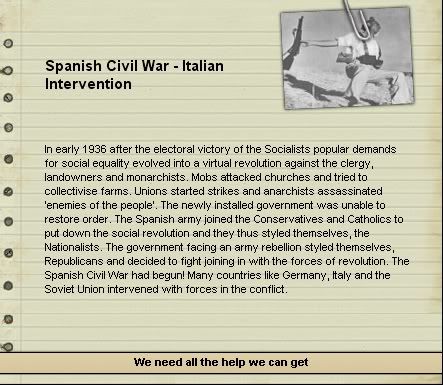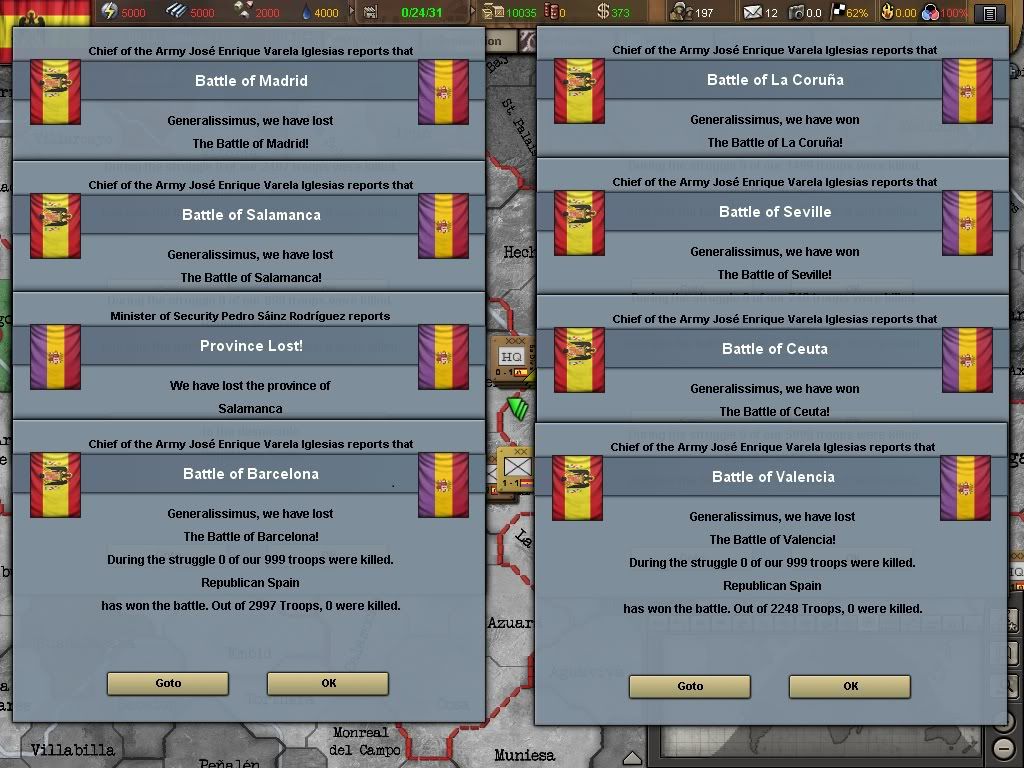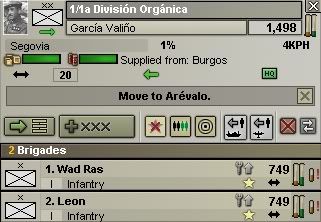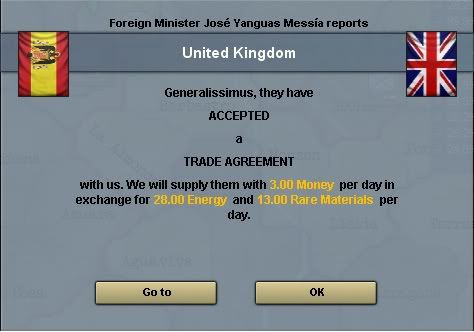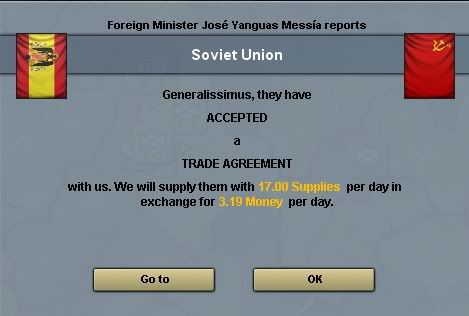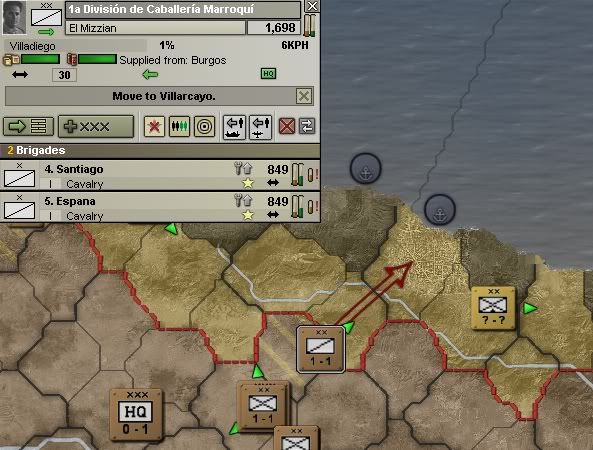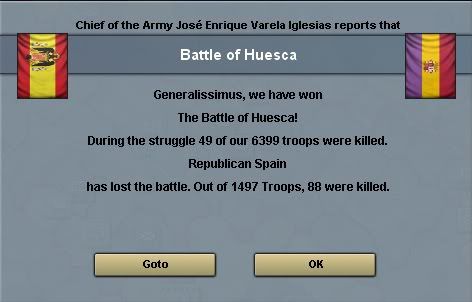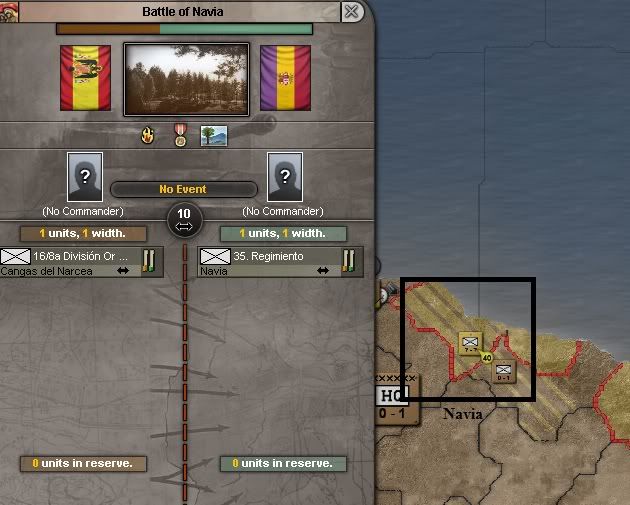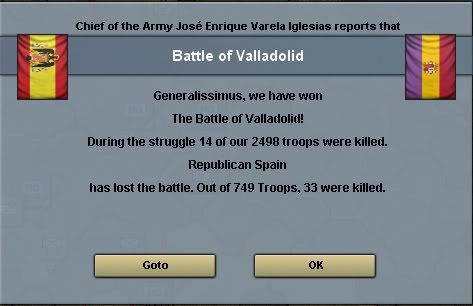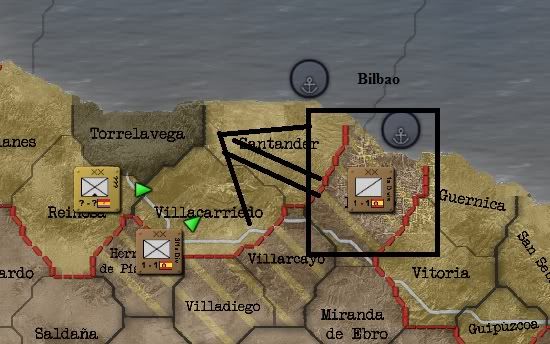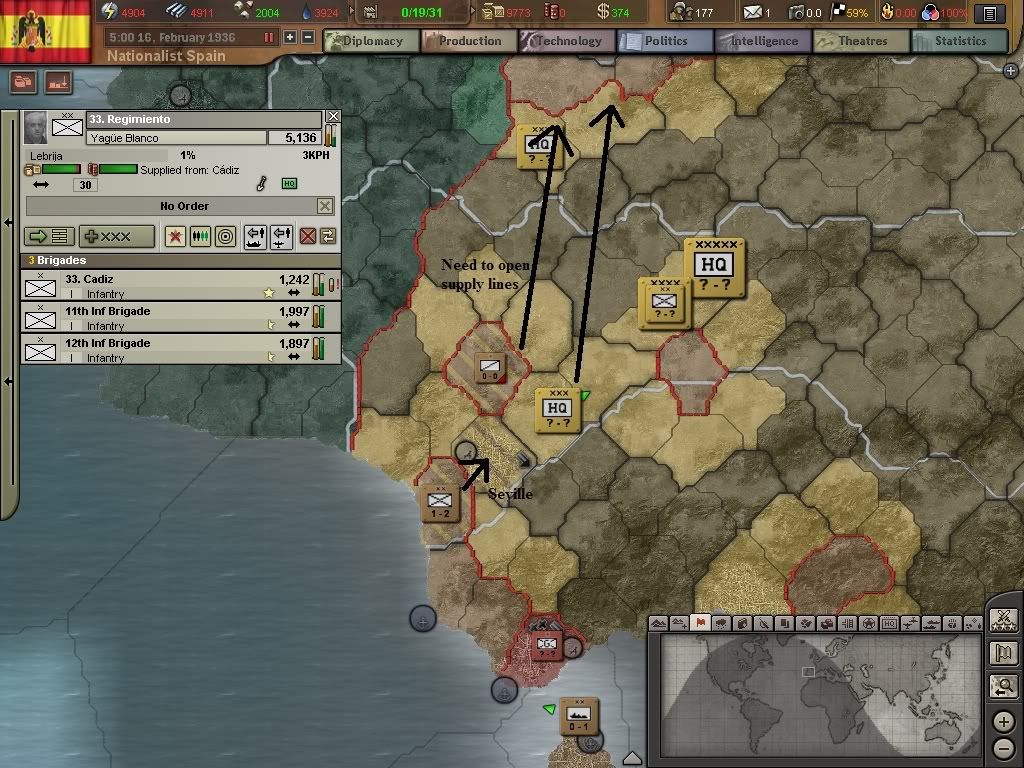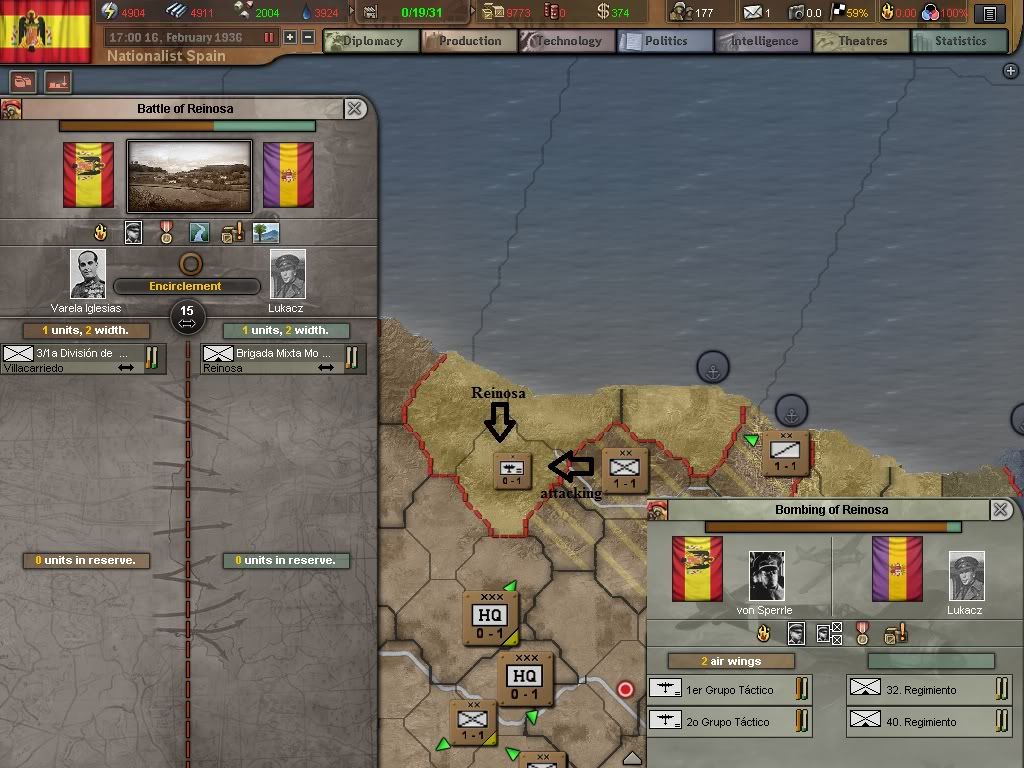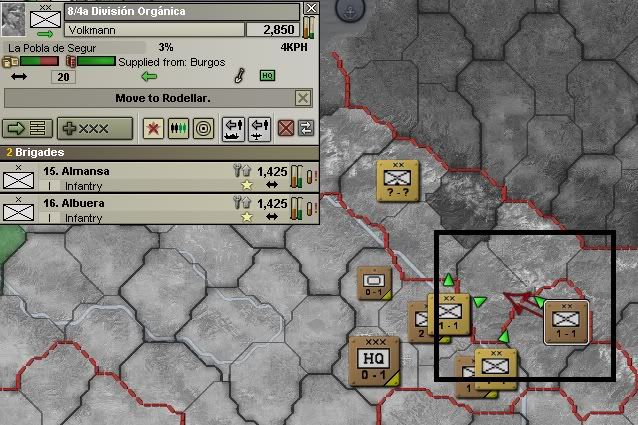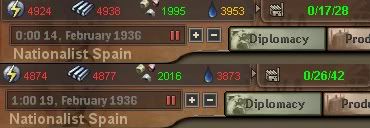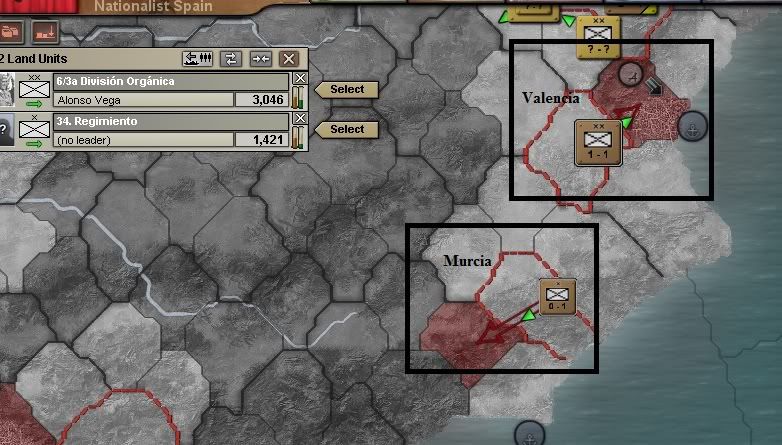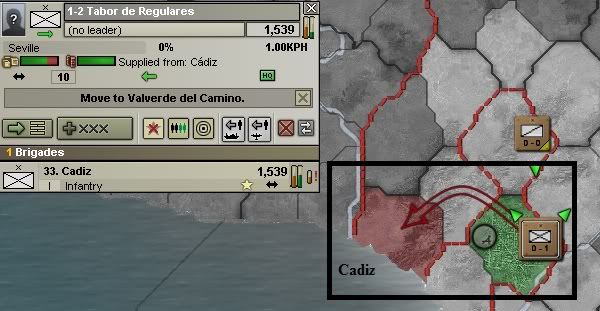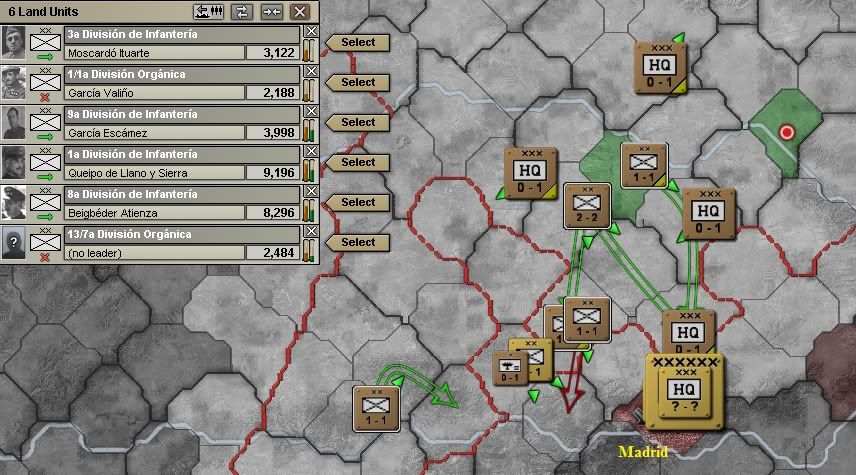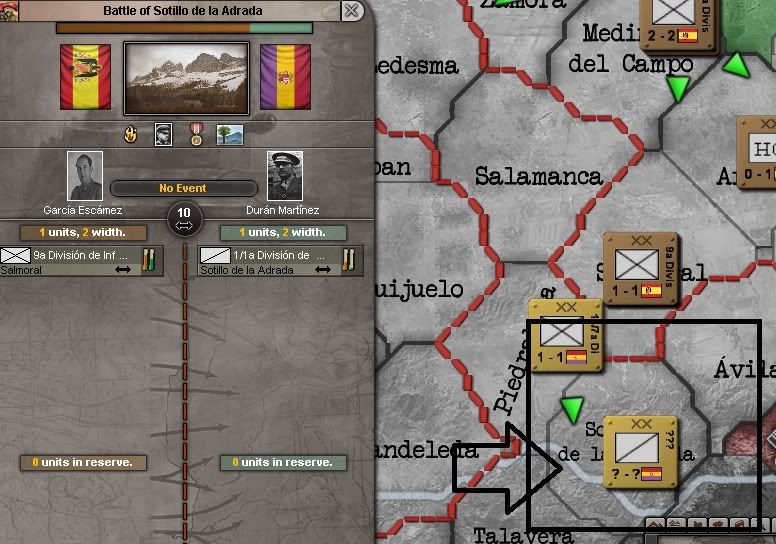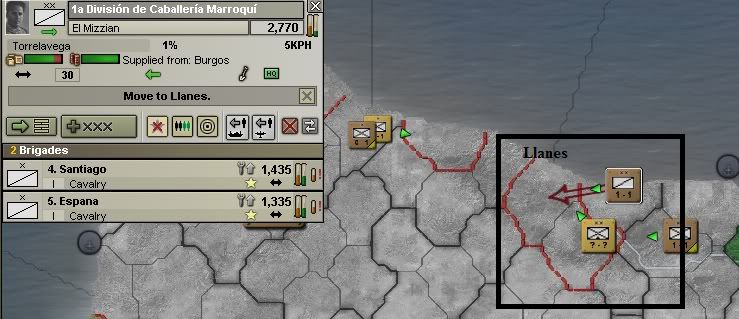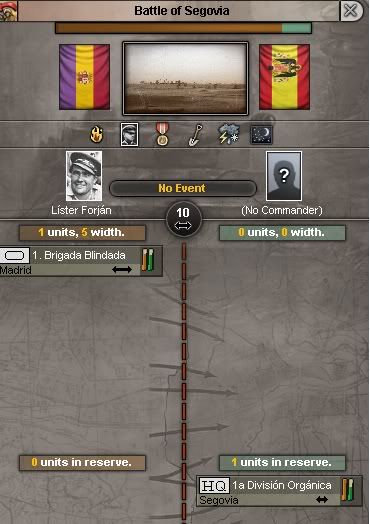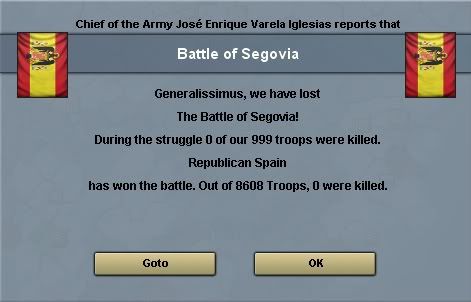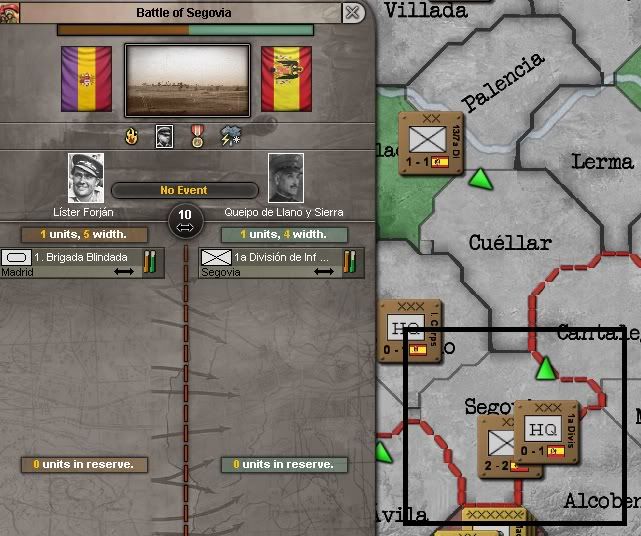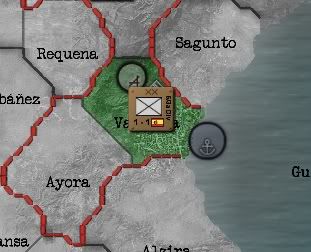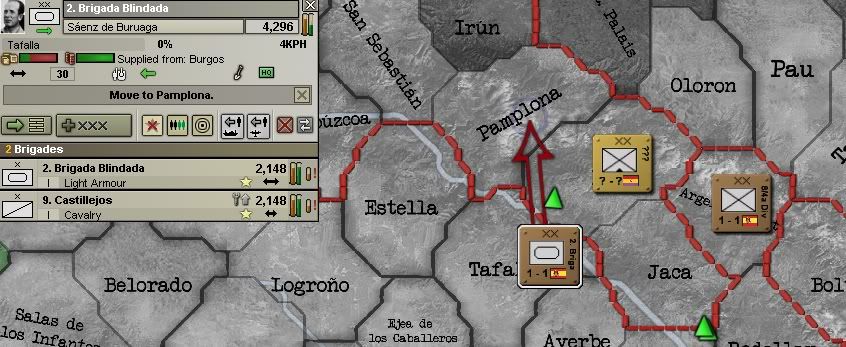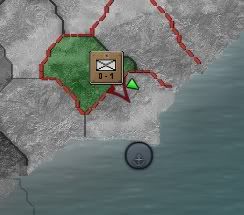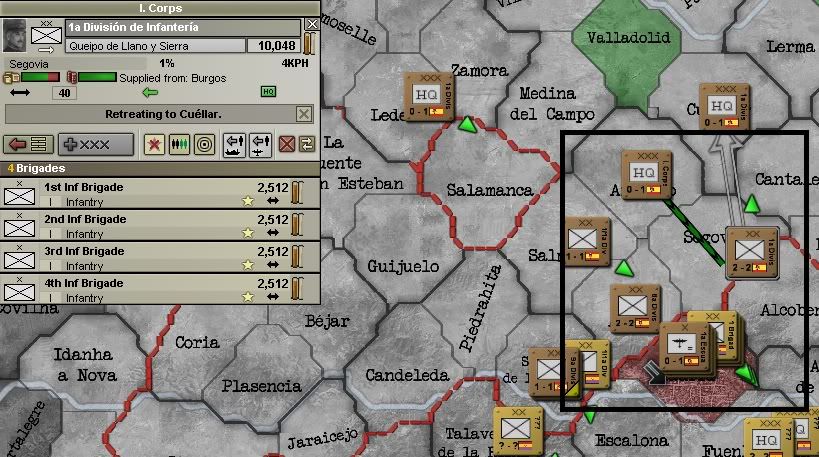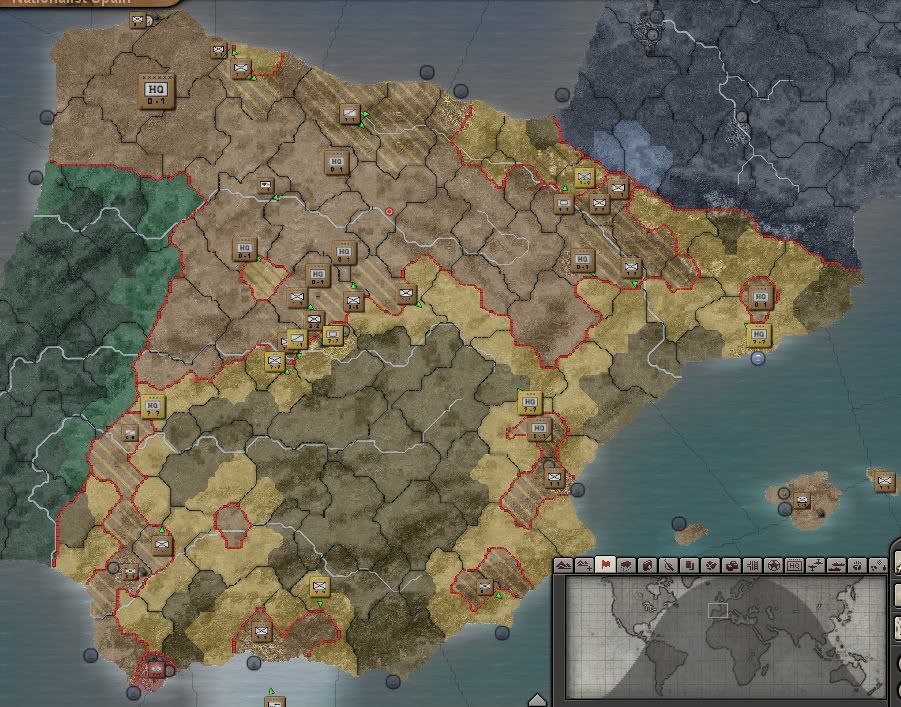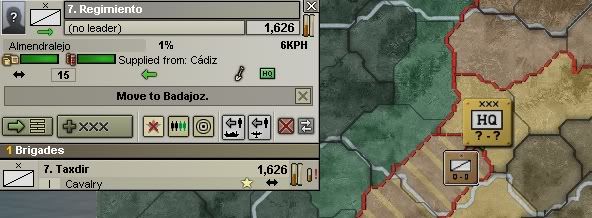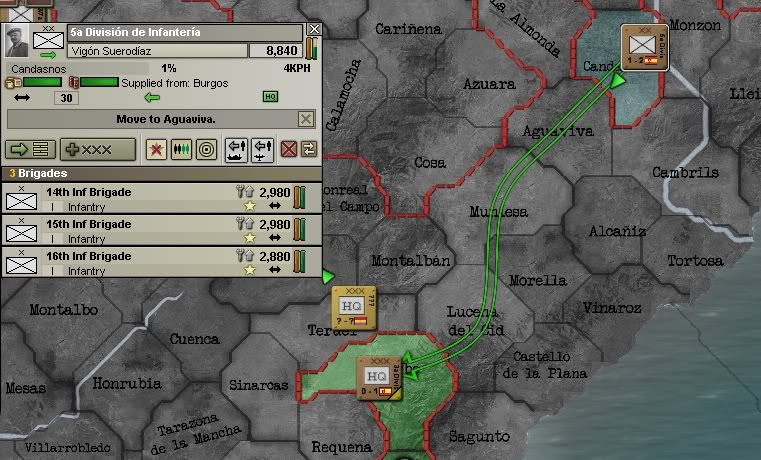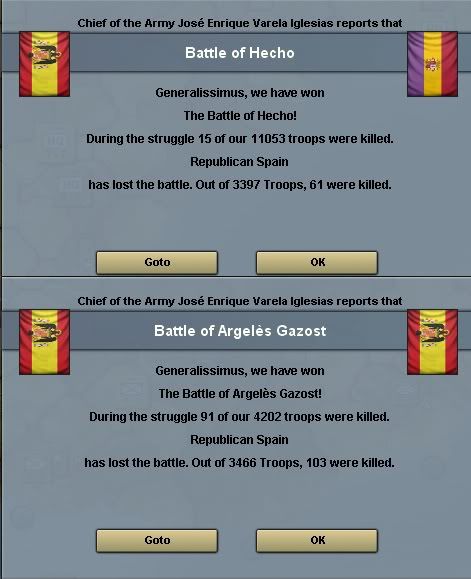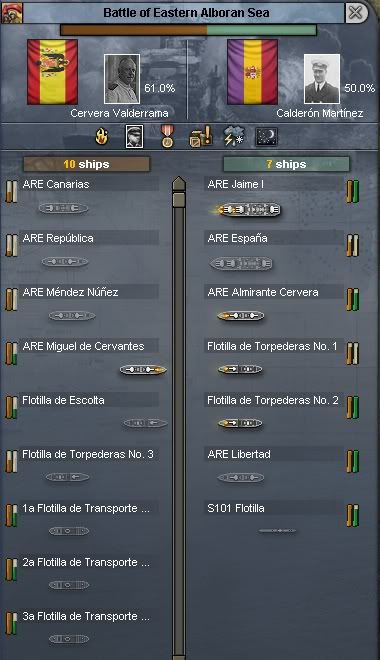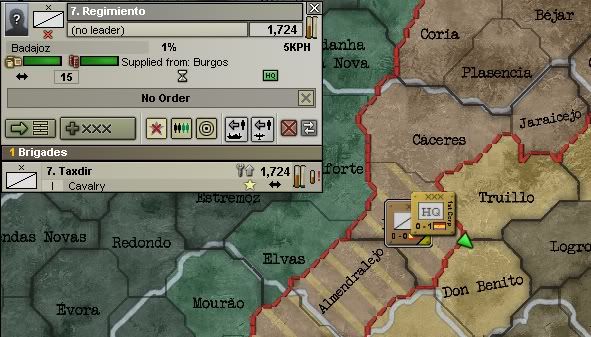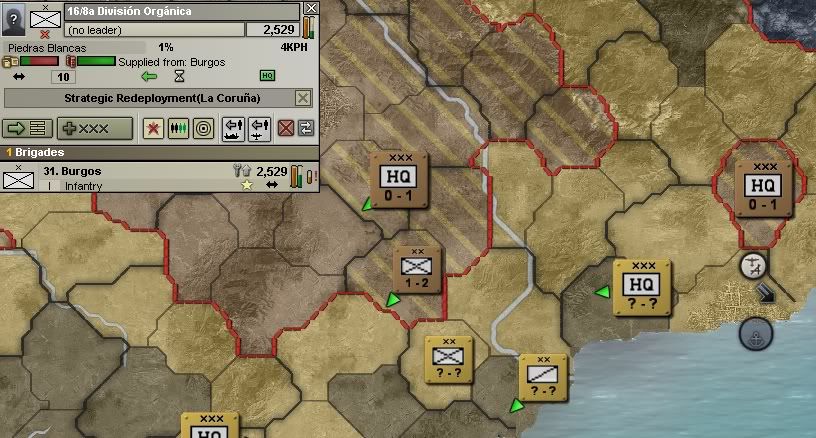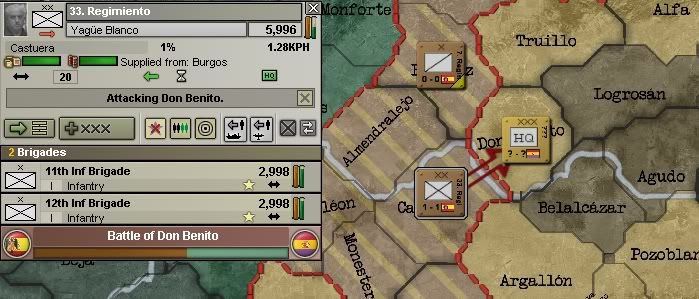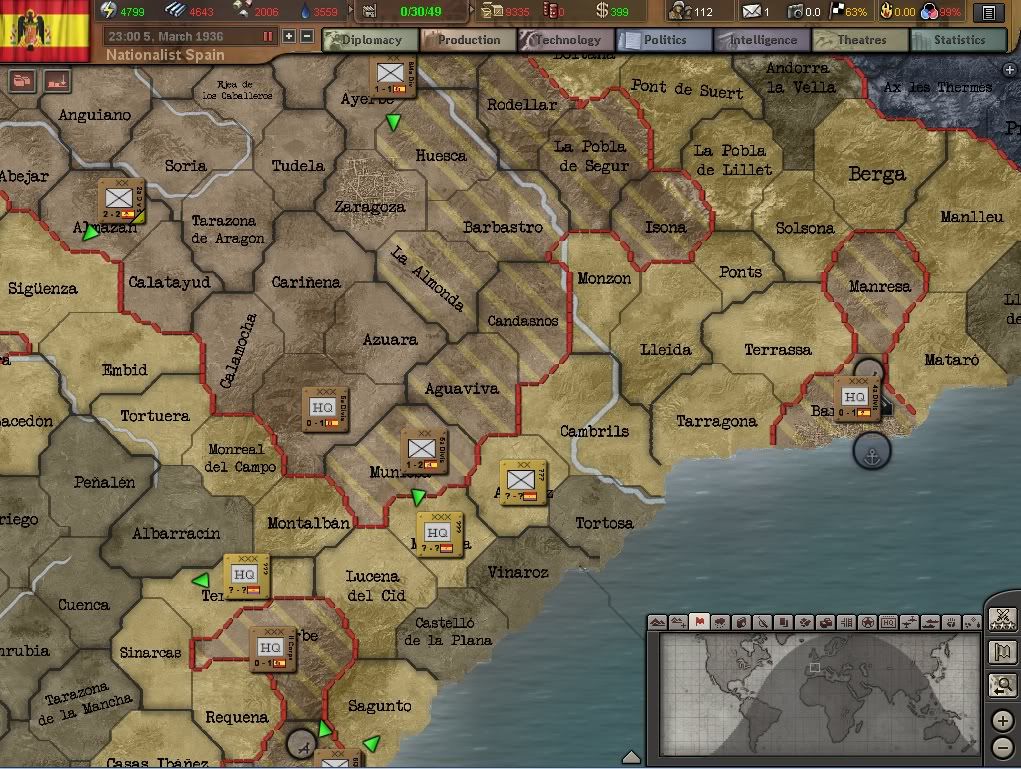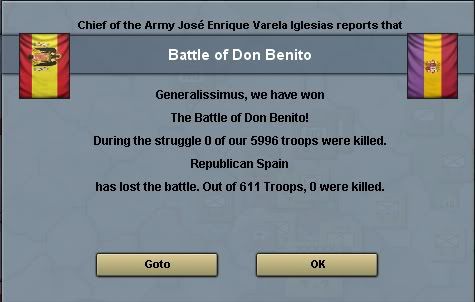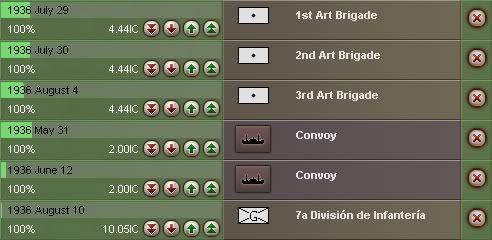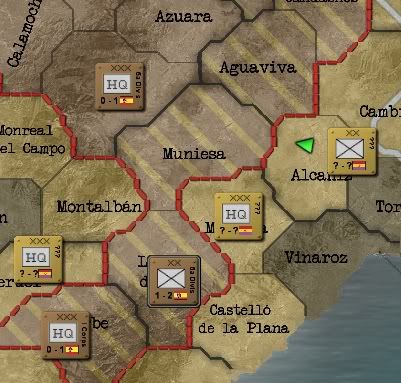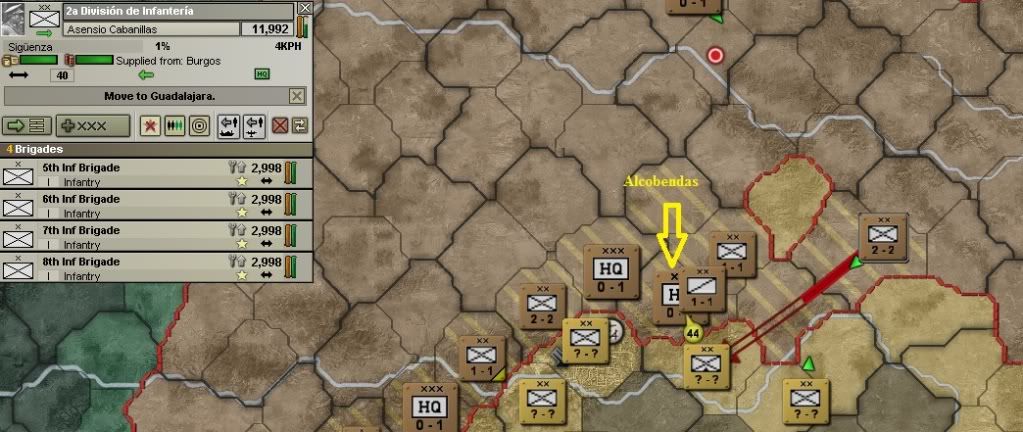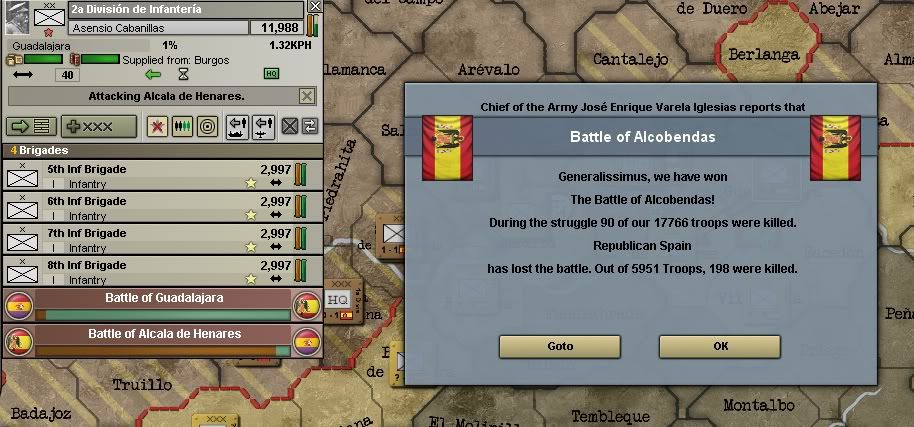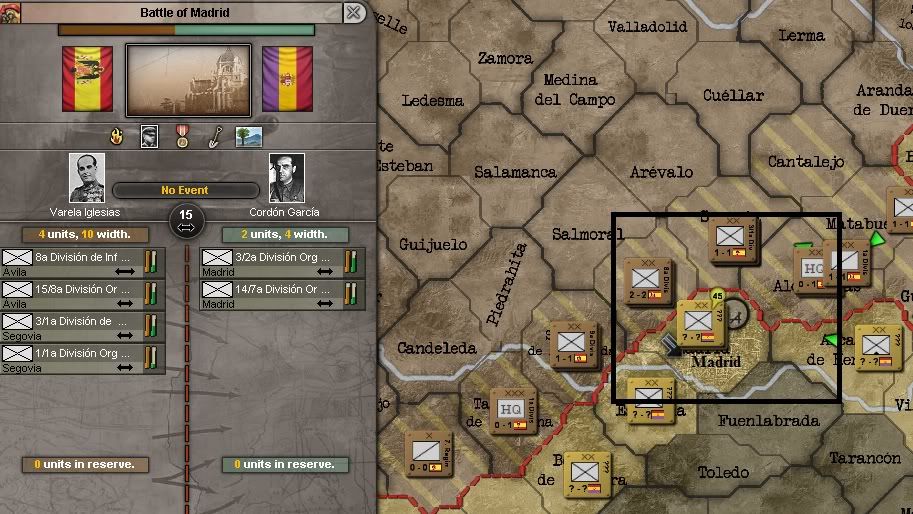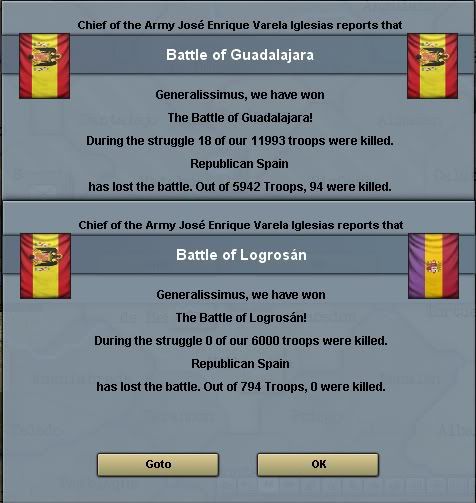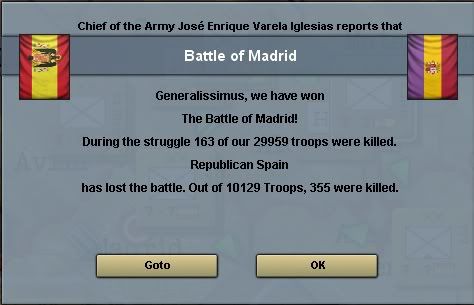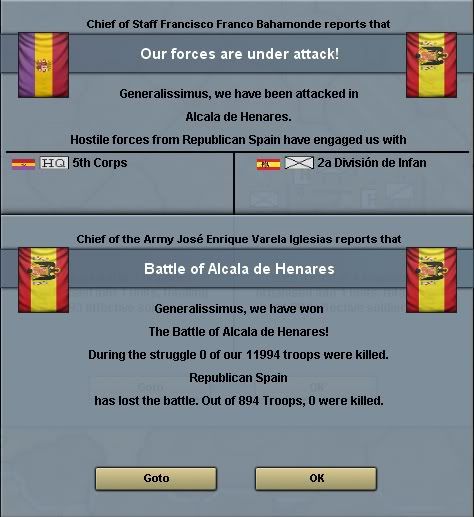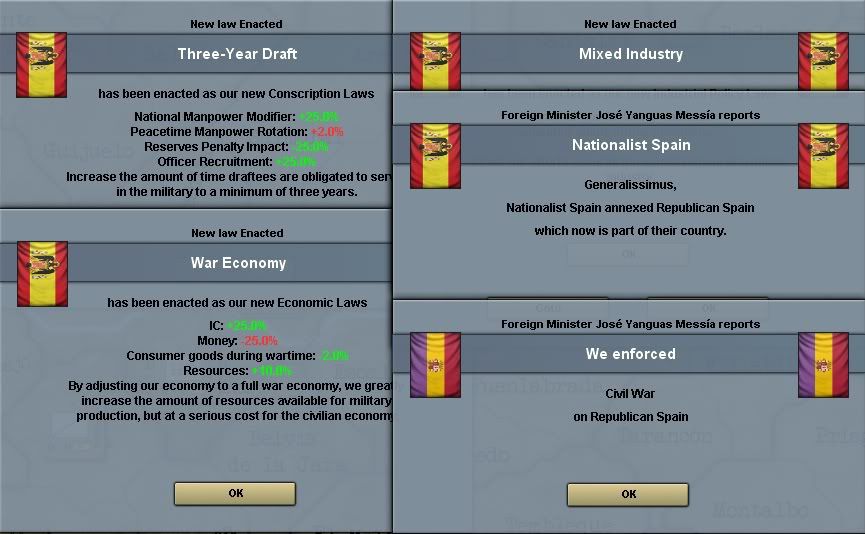Chapter 4: A New Day
12 February 1936:
As the new day dawns, Franco has a better picture of what is needed to do in this new era. The forces of Nationalist Spain were his to command. The weight of victory or defeat would fall on his shoulders, and there was no way back. Franco has his ambitions, far beyond the mere governance of his people. He would make his country a power again. But first, he must destroy the remnants of the Republic.
He could allocate more IC to upgrades, after the reinforcement needs had dropped, but he also needed to allocate IC to producing supplies. Now, with his needs met, he would channel available IC to upgrade his troops, as well as produce one more artillery brigade. If this war stretched on beyond the summer, the improved ability to pepper his opponents with artillery fire could prove decisive. His artillery would inflict 50% more damage to opposing units while adding somewhat to its ability to both attack and defend. It also would not require as many young men to produce the artillery, which could come in handy, should Nationalist Spain be required to send troops elsewhere should a wider war come.
Franco decided that he would have to evacuate any troops from the islands. With no more convoys left, and no way to supply them, they would be evacuated and made available to fight on the mainland.
The industrial situation was going to be dire soon. With not enough coal, metals or rare materials to fuel their factories, Franco set his foreign minister, Jose Massia, to work to acquire enough raw materials from countries that would not require us to ship them ourselves….
He works his magic, acquiring 28 tonnes of coal and 13 tons of rare materials from the British (who probably support our enemies!).
Our initial overture to France to sell supplies (to pay for these resources) fell flat, but the Soviet Union agreed to buy 17 tonnes of supplies to more than reimburse the money we would spend on the resources. We need to arrange to sell more supplies (which unfortunately will suck up IC) in order to purchase more resources.
The victorious divisions in Zaragoza, the 2nd and 5th infantry divisions were sent to Huesca and Barbastro (respectively) to link up with Volkman’s 8/4a Division.
Franco would have to order Blanco’s unit to attack Seville, as the republicans had managed to keep a hold of it.
2nd and 5th infantry divisions
At 15:00, we get word that our German friends would help us, giving us 3 more infantry brigades in Burgos. General Garcia Escamez was put in command, and the three divisions in Burgos , the 1st, 8th, and 9th divisions were put under the command of Gen. Orgaz Yoldi under I. Corps and sent to put the Republican units at Salamanca at bay.
Franco decided to abandon the port at Cadiz, as the units there, were cut off from the supply lines from Burgos… We would return to Seville, but not just yet. We would need to supply over land, since our convoys were not able to carry the load.
Towards the end of the day, Franco received word that Republican units had abandoned the port of Bilbao and sent the 1st Morrocan Cavalry Division to take and hold that port.
The second day of the war came to an end with plans moving forward. The bulk of the battle was still to come.



